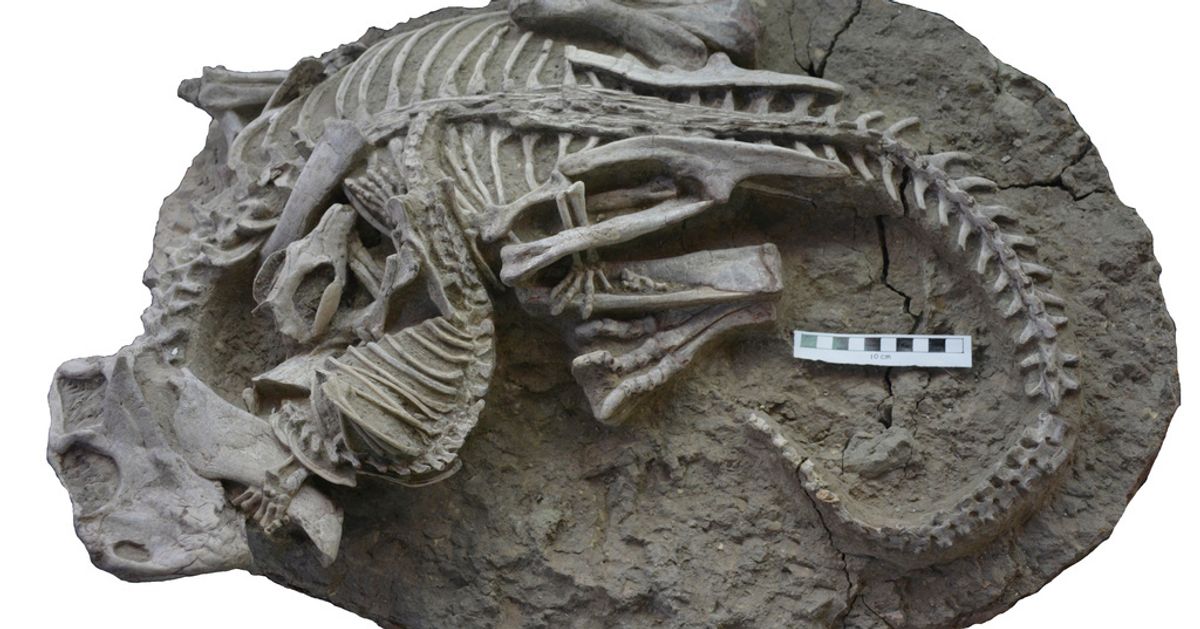In a remarkable discovery in China, evidence suggests that early mammals may have hunted and consumed dinosaurs. The fossil, found at a site nicknamed “China’s Pompeii,” showcases a badger-like creature feeding on a small, beaked dinosaur, with their intertwined skeletons frozen in time by volcanic debris.
Describing the find as a “prehistoric hunt captured in stone,” paleontologist Steve Brusatte of the University of Edinburgh marvels at the unique nature of the fossil. Dating back around 125 million years to the Cretaceous period, the fossil offers a glimpse into a possible predator-prey relationship between mammals and dinosaurs.
According to Jordan Mallon, a paleobiologist at the Canadian Museum of Nature and the study’s author, the smaller mammal was likely attacking the dinosaur when both were trapped in the volcanic flow. The mammal is seen perched on the dinosaur, gripping its jaw and hind limb while its teeth penetrate the ribcage.
This discovery challenges previous notions that mammals during the Age of Dinosaurs were merely small and insignificant creatures, overshadowed by their dinosaur counterparts. Mallon notes that while there have been previous fossil findings suggesting mammals consumed dinosaur remains, this particular fossil suggests that mammals actively preyed on dinosaurs much larger than themselves, rather than merely scavenging already deceased individuals.
The authenticity of the fossil has been verified by the study authors, who conducted their own preparations of the skeletons and analyzed rock samples. Although some fossil forgeries have been reported in the region, they are confident in the genuineness of the fossil, which was discovered by a farmer in 2012. They welcome other scientists to study the fossil as well.
The fossil duo consists of the meat-eating Repenomamus robustus, roughly the size of a house cat, and the Psittacosaurus lujiatunensis, a plant-eating dinosaur about the size of a medium-sized dog with a parrotlike beak. Mallon emphasizes that while mammals may have occasionally preyed on dinosaurs, overall, dinosaurs likely still consumed mammals more frequently.
The implications of this discovery are significant, revealing that mammals during the Age of Dinosaurs were capable of fighting back against their reptilian counterparts. It challenges the conventional belief that dinosaurs ruled the Earth while mammals remained in the shadows.
The Associated Press Health and Science Department is supported by the Howard Hughes Medical Institute’s Science and Educational Media Group, with the AP being solely responsible for all content.
[Image Credit: Michael W. Skrepnick via AP]
Denial of responsibility! VigourTimes is an automatic aggregator of Global media. In each content, the hyperlink to the primary source is specified. All trademarks belong to their rightful owners, and all materials to their authors. For any complaint, please reach us at – [email protected]. We will take necessary action within 24 hours.


